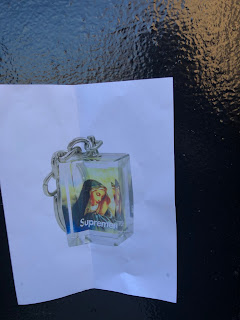After an unexpected and, frankly, an unconventional set of events that occurred over the Summer, my best friend became unable to live in the McMahon dorm rooms at Fordham University, which meant that she would not be my roommate for this academic year. Instead, she found a quaint little apartment on Wadsworth Avenue in Washington Heights. Over time, and because my best friend and I are inseparable, this five-stop journey on the A has become- as I jokingly refer to it- my work commute. As I travel on the subway, I notice the number of people getting on and off at each stop. I focus on the similarities that the people that get off on certain stops have and how the demographics change the further up you go on the A.
I am a Latinx woman. My home is in Cali, Colombia. I had to learn, through my experiences here, that Latinx people are a minority and, therefore, that I am a minority when I am in this country. I am often left feeling heartbroken over missing my country and my culture as I watch certain people mistreat and misjudge all those that I recognize to be my Latinx brothers and sisters; but, much to my delight, I quickly realized that the area around Wadsworth Ave. was like a tiny little haven. The majority of the residents there are Latinx or other minorities, probably due to the fact that rent is not as obnoxiously expensive as the lower areas in Manhattan. Latinx culture is everywhere, from shops that sell Hispanic food, signage in Spanish, and a plethora of Roman Catholic images and artifacts on the street or in windowsills… whatever it may be, this area makes me feel at home.
Last week, as I made my way to “The Wad” (what my best friend and I call the apartment building she lives in), I noticed a particular piece of paper that was stuck to a wall but was being blown violently by the wind. I only got closer to it because I thought it would blow away and wanted to see if I could get it to stick onto the wall more, but what I saw was not anything I was expecting…
The paper was white, and it seemed like it had been in someone’s bag for it had very clearly been folded down the middle. In the center of the paper was an image of a keychain that had a picture of the Virgin Mary on it with the words “Supreme” printed over Her lower half. I rolled my eyes. Was there nothing sacred to the Supreme designers? I thought about where I was standing- Wadsworth Avenue, a street filled with extremely traditional Roman Catholic objects and images- and wondered what the residents thought about this and who had put it up on the wall.
As I continued my way to Maya’s apartment, I saw more and more of these poorly pined posters along the street. I didn’t know what to make of them or the image that was on them. Supreme is most definitely a luxury brand that not every person in the world can afford. It has become a sort of staple for the current generation, and to many people, it is even seen as sacred. The Supreme Religion, the “vision”. I saw the irony in it and thought maybe it could be clever, but, still, I wondered who had put it up? This area of the city, at least to my knowledge, is not filled with Supreme wearers. Then, a realization dawned on me as I walked up the stairs to the fifth floor where Maya, a non-latinx privileged student, resides… There has been an influx of students and “hipsters” into this area because of the relatively cheap rent and proximity to the center of Manhattan. Could gentrification explain it? Or has Supreme really infiltrated all aspects of society everywhere?
I sat down with Maya and told her about what I had seen. She thought it was hilarious and that whoever had done it was “probably an obnoxious boy”. I took my laptop out and googled the price of the keychain. It costs about $135. This seemed ridiculous to me. The Virgin Mary, so often seen as a symbol of hope by those suffering and in poverty- an image that is supposed to be universal and accessible to everyone, printed onto a keychain that is probably not accessible to the majority of the population and then put on a poster. I wondered what Dorothy Day would say about this… the use (maybe some would say exploitation) of a sacred Catholic image by capitalism for “fashion”.
This simple image printed onto a white piece of paper symbolized gentrification for me and the appropriation of a cultural artifact- because religion is part of a culture- for profit. It brought up concepts that I think about every day in a very material, real way. I often wonder how religion fits into this system that uses people for profit, systematically oppresses others because it is convenient, and fails to provide for the most basic human needs of people that are not privileged; but I remain one hundred percent confident that the way that it does fit into the modern world is not through co-opted images on Supreme merchandise or poorly made posters.







No comments:
Post a Comment